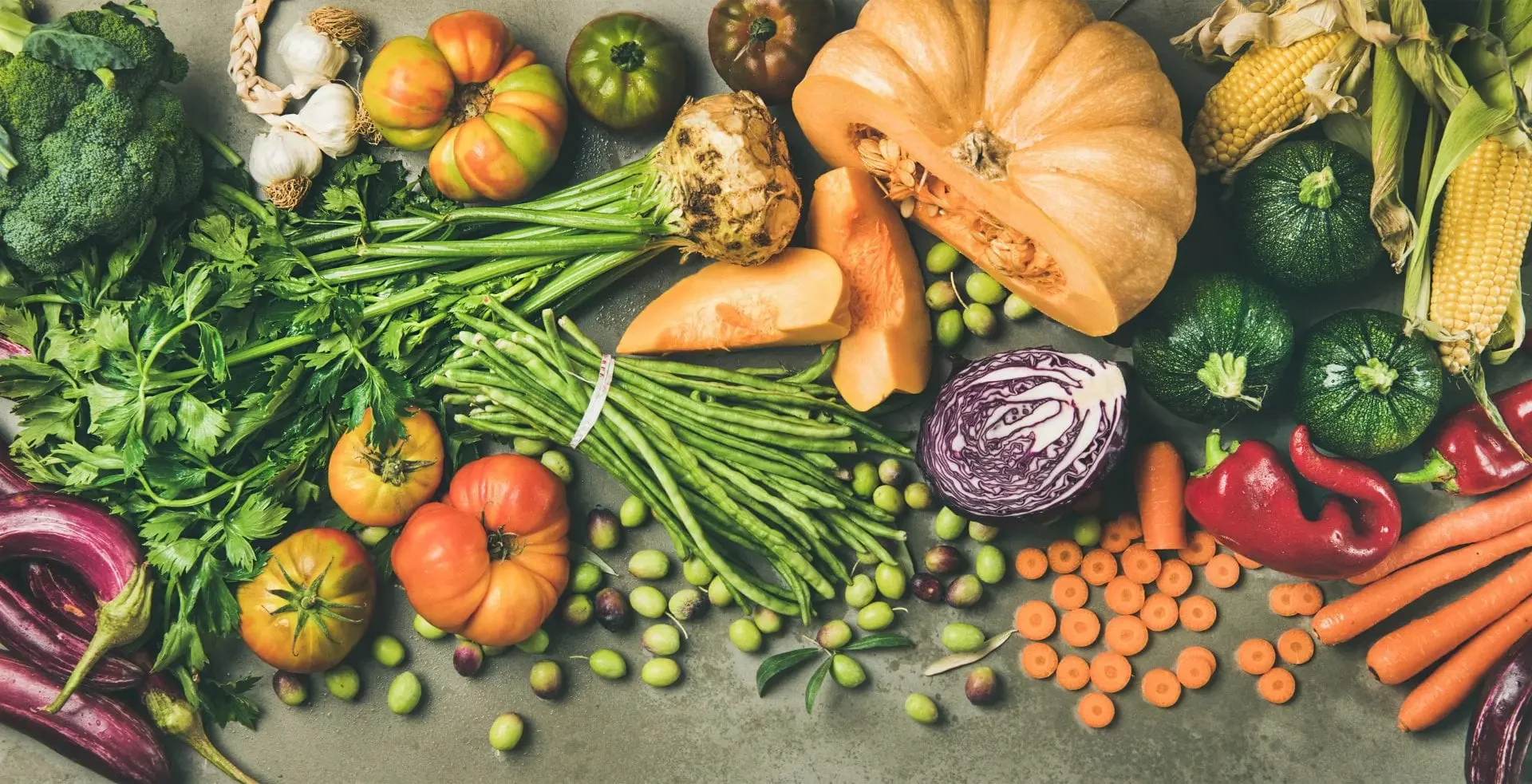The world isn’t a supermarket. Food isn’t really available year-round and at cheap prices. Most of the world waits for apples in the fall, for fresh greens in the spring—or, at least, they used to. Globalization of food as an industry has made the megamarket a normal thing, and people all over the states no longer wonder at finding tomatoes in the dead of winter. This is progress, right?
Not really. Humans are omnivores. The more food we have available to eat, the more we eat, and the less we care what we’re eating. America is getting dangerously fat, and parts of Europe and Asia that follow our patterns are not that far behind. To make all that food available, this basic, wholesome thing that’s one of our basic needs as living creatures has been homogenized, processed and leached of taste and health by big-I Industry. And the worst part? People are forgetting what real food tastes like.
A century ago, two centuries ago, the list of available food sources was much bigger than it is today. Now, people eat chicken fingers and fries. Jamie Oliver showed us whole schools of kids that didn’t know that those fries come from a potato. Or that cows and beef are the same thing. By all that’s healthy and wholesome, pizza has just been declared a vegetable in schools! Is this really the world we want to live in? Psst, your answer should be ‘no’ here. But how do we get out of that food trap that makes it almost impossible not to be overweight in America? One option is eating seasonally. And it’s easier now than ever.
America as a whole is losing all sense of deliciousness and anticipation, but there’s been this little-but-growing movement to get back to the way food is meant to be. The way France, where the women don’t get fat, the book says, eats. Farmer’s markets are popping up all over, even in places where the growing season is short, and they bring fresh, local produce that carries far less of the Industrial burden—usually at far less of the price, too. There’s been a revival in cottage industries, home gardening and food production, victory gardens (especially since the economy tanked), do-it-yourself, slow-cooking. Part of it is the growing awareness of just how gross the big food production processes are. Part of it is small farmers looking for ways to get their produce to the people and not have to sell out to the megafarms. Part of it is all the research in the last few years pointing out all the ways industrialization of everything is killing us.
Here’s the thing. All that can be fixed by just eating real food in a real way. Market pressures will take care of the rest. It’s a little more effort, but it improves your quality of life all over the place, and after a while, it’s the new normal. And there’s things like this column to make it easier. Listen, those fast food hamburgers don’t really taste all that good. You’ll see after you’ve been off them a while.
Food that’s in season tastes better. It’s meant to, because that’s when it’s best to be eaten. The vitamins and minerals are at peak form, the flavors are strongest, the size is largest, and the produce is most prolific and therefore cheapest. But it’s also healthier for the community, because if you’re eating, say, zucchini because it’s producing like gangbusters, you’ll be looking for as many different ways to eat it as you can. Your local grandmothers will have dozens for you, and you learning the recipes and where they came from preserves those bits of culture that would otherwise die out. Think about the friends you could make at harvest parties and canning days, if you’re into that.
Best of all, seasonal eating is healthy for the planet. Do you know what one of the biggest polluters is? It’s moving goods around on long haul transport. Your seasonal food will likely be local or semi-local; super-ripe fruit and veg won’t travel far. This means that there’s less pollution all around, and it supports your small farmers who make a better living at markets, like old times, than selling to the conglomerates that don’t want the best peaches, but the ones that travel the farthest. Their loss is your gain: you get the best ones, the juicy, rich, silky ones that make you want to go and write poems about eating them. You get the ones that remind you about how food used to be, and how enjoyable it was.
You also get the ones that people are looking to the future with: hydroponically grown, or organic, or sustainably harvested, wild-crafted and urban-gardened, heirloom plants and animals that almost went extinct but have been saved by foodies who hate to let a good edible not be eaten. You support these small business who make their own cheese from grassfed goats, who harvest their own honey from people’s back yards, who make their own jam from public fruit, and they keep bringing you these wonderful things.
All of which are noble and upstanding. But the number one thing that sustainable eating brings you? Variety. So you’ve never had a rutabaga before. Now you know three ways to cook it, and you can’t imagine your life without it, and what about those eggs that are green inside the shell and have yolks so orange they look like cartoons, but taste better than anything else in omelets?
Month after month, you’ll have a list of new things to try, new foods to add to your diet that are far better choices than the processed things everyone else is eating. Not everything will be available everywhere, but that’s part of the fun—when you go somewhere new, you can eat what’s seasonal there that you can’t get at home! You’ll be a food adventurer, and we all want to have adventures.
January
Fruits: Apples, Asian Pears, Blood Oranges, Cherimoyas, Clementine, Cranberries, Dates Medjool, Grapefruit, Guavas, Kiwis, Kumquats, Lemons, Limes, Lychees, Mangoes, Oranges, Pears, Passionfruit, Persimmons / Sharon Fruit, Pineapple, Pomegranate , Quinces, Rhubarb, Satsumas , Sloe Berries, Tamarillo, Tangelos, Tangerines, Winter Melons
Veggies: Avocadoes, Beets, Broccoli, Brussels Sprouts, Cabbage, Cardoons, Carrots, Cauliflower, Celeriac, Celery, Chard, Cime de rapa (Italian bitter leaf brasica), Claytonia, Collard Greens, Curly Kale, Early Eggplants, Endive, Jerusalem Artichoke / Sunchoke, Jicama, Kale, Kohlrabi, Leeks, Lettuce, Olives, Onions, Parsnips, Pea Shoots, Potatoes, Pumpkins, Rutabaga / Swede, Purple Broccoli, Salsify, Sea – Kale, Scallions, Shallots, Spinach, Spring Greens, Spring Onions, Squash, Sweet Potatoes, Turnips
Herbs / Nuts / Others: Almonds, Arugula / Rocket, Chervil Root, Chestnuts, Chicory, Cress, Dandelion, Fennel, Garlic, Ginger Root, Green Garlic, Hazelnuts, Horseradish, Lambsquarters, Nettles, Orach, Wild Mushrooms (Pied de mouton, Perigord Black truffle, Winter truffle, White Truffle, Chanterelles – (Yellow/Grey), Girolles, Sparassis – (Cauliflower Mushroom)), Walnuts
Meat and Fish: Anchovy, Bream, Brill, Clams, Cockles, Cod, Coot, Crab, Crayfish, Curlew, Dab, Flounder, Goose, Grouse, Gurnard, Hare, Haddock, Hake, Halibut, Herring, John Dory, Langoustine, Lobster, Mackerel, Mallard, Moorhen, Mussels, Oysters, Partridge, Pheasant, Pollock, Quail, Rabbit, Red Mullet, Sardine, Scallops, Sea bass, Sea Urchin, Snipe, Sole, Turbot, Turkey, Venison, Whelks, Whiting, Woodcock
February
Fruits: Apples, Asian Pears, Cherimoyas, Clementines, Dates, Grapefruit, Guavas, Lemons, Limes, Meyer Lemons, Oranges, Papayas, Pears, Rhubarb, Tangelos, Tangerines
Veggies: Avocadoes, Asparagus, Beets, Bok Choy, Broccoli, Broccoli Rabe, Brussels Sprouts, Cabbage, Cardoons, Cauliflower, Carrots, Celery, Early Spring Greens, Endive, Fava Greens, Jerusalem Artichokes / Sunchokes, Jicama, Kale, Leeks, Lettuce, Olives, Onions, Parsnips, Pea Shoots, Potatoes, Radishes, Radicchio, Rutabaga / Swede, Salsify, Scallions, Scorzonera, Shallots, Sweet Potatoes, Turnips
Herbs / Nuts / Others: Almonds, Arugula, Chestnuts, Chicory, Cilantro, Cress, Dandelion, Dill, Fennel, Garlic, Ginger Root, Green Garlic, Lambsquarters, Nettles, Orach







